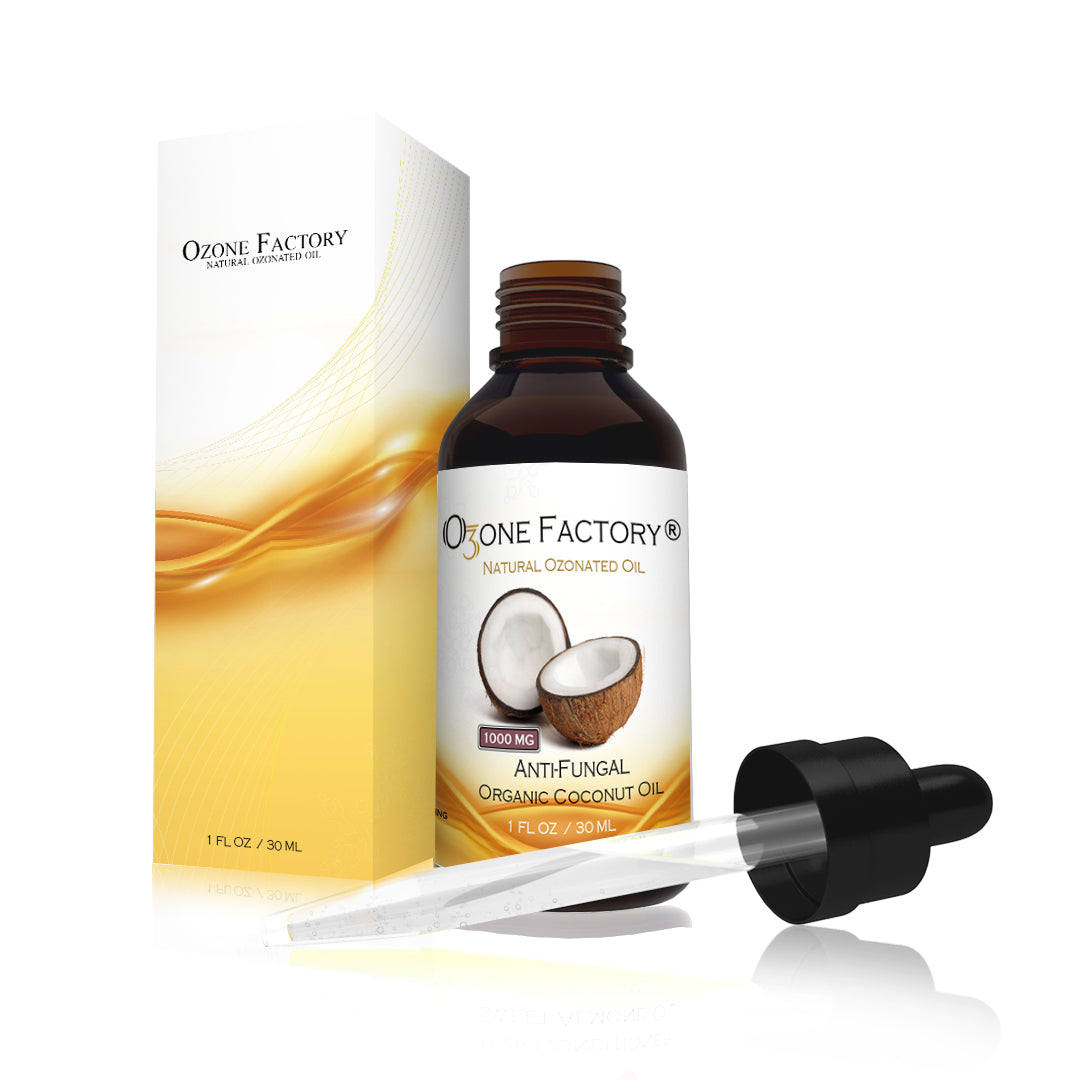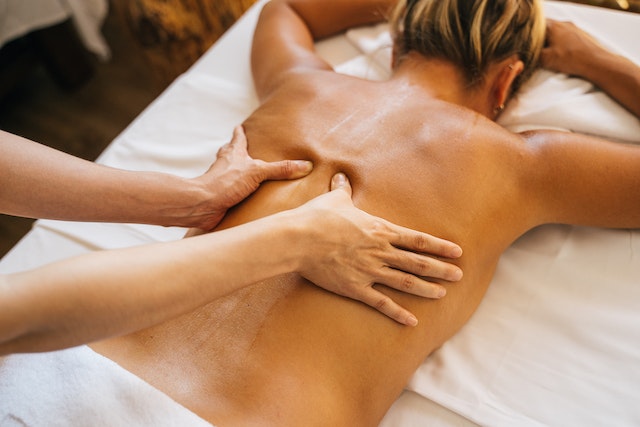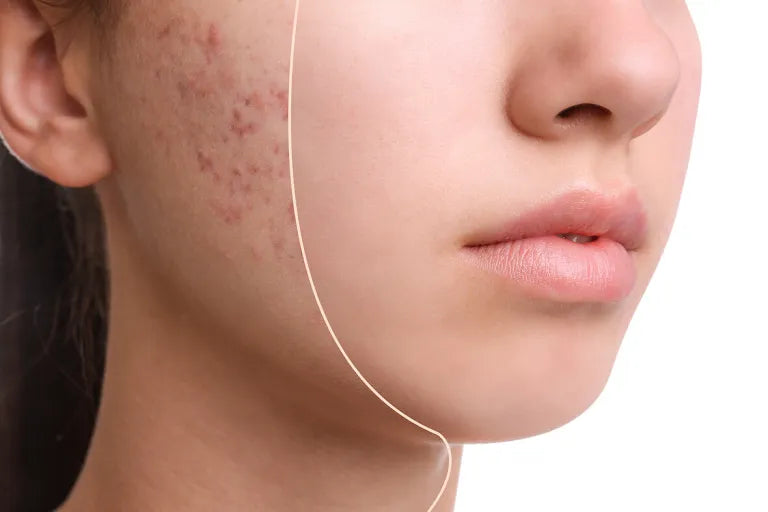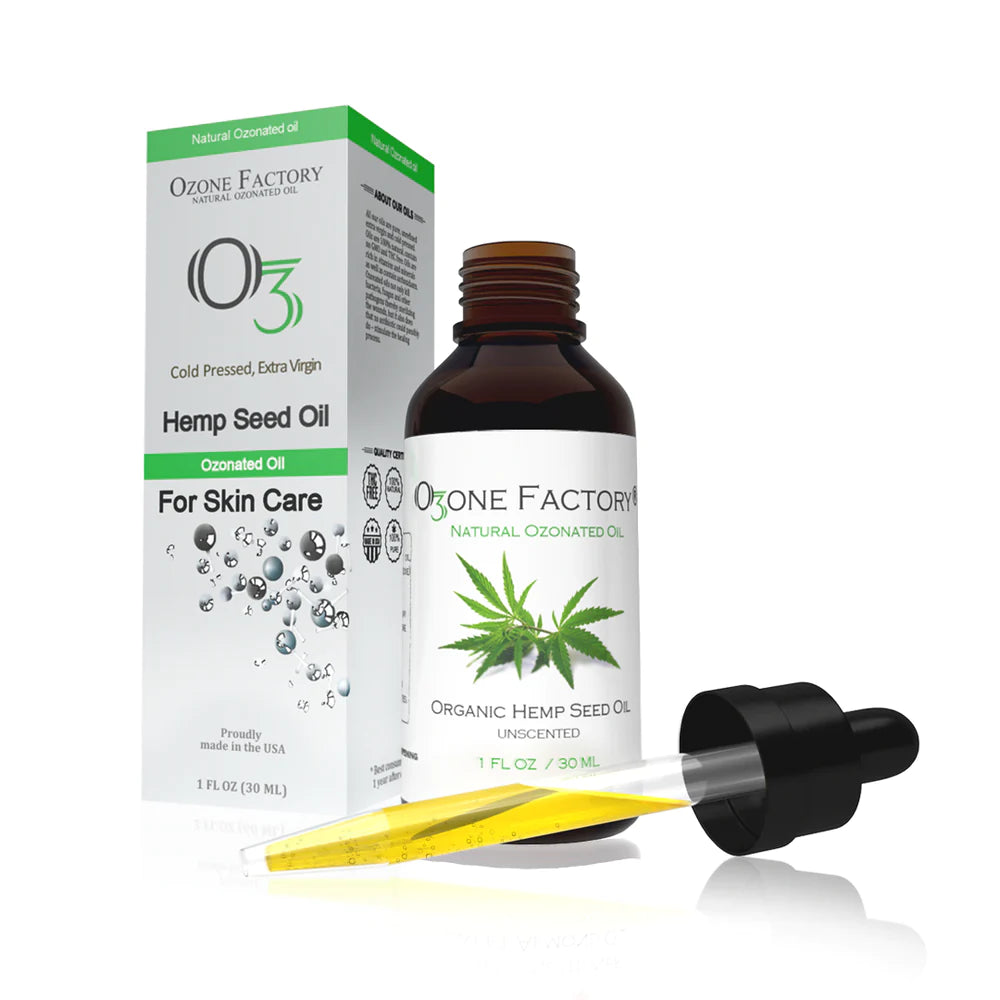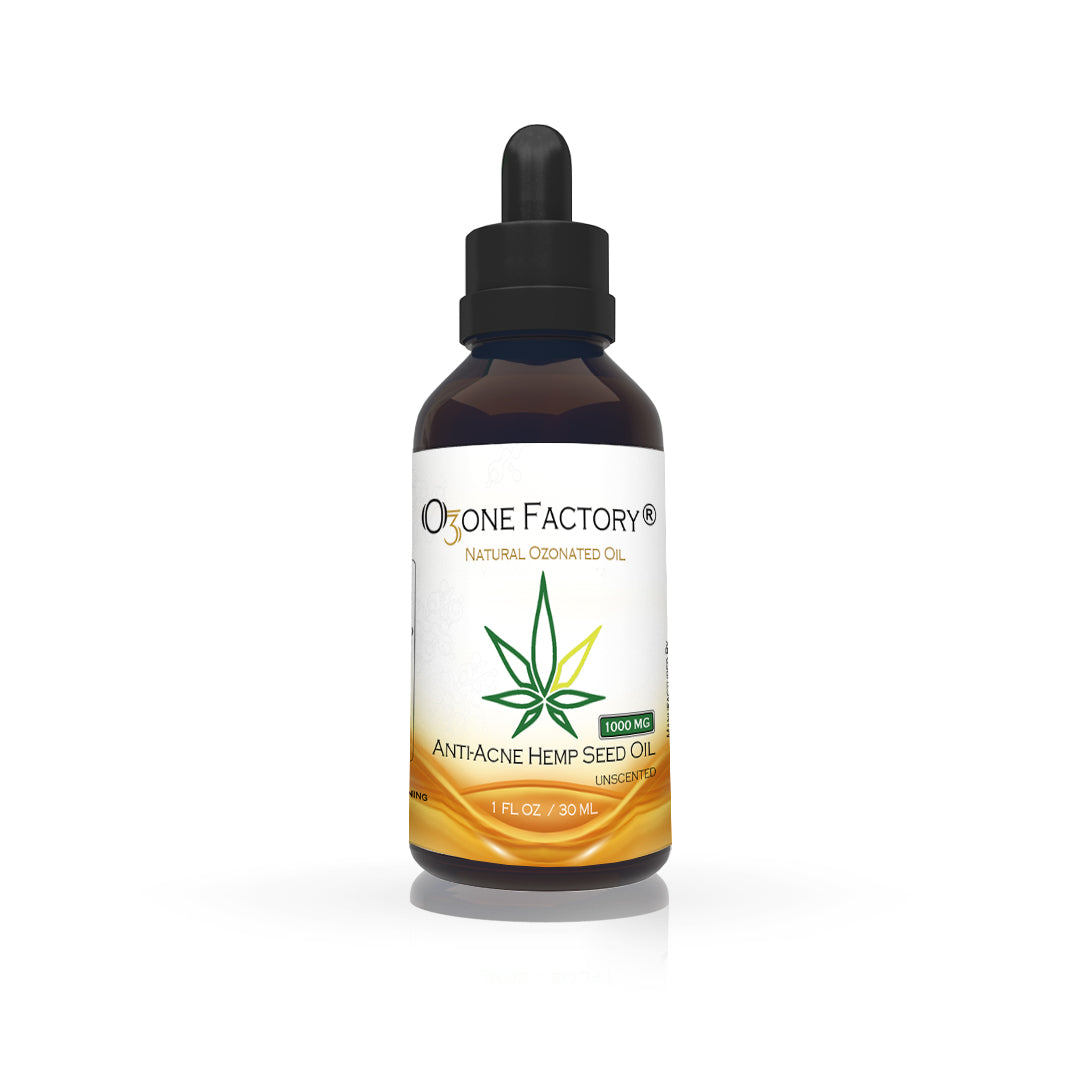
Ozonated Oils are an incredible product to incorporate into your hair care regimen. From improving dry scalp and hair loss issues to adding shine and protecting against damage, ozonated oils offer a green way to care for your hair. The use of ozonated oils is also good for the environment and your overall health, since it reduces exposure to harmful chemicals. Read on to discover how you can start using ozonated oils in your hair care routine.
IS OILING GOOD FOR HAIR?
Before we dive in, let’s break down the difference between the traditional practice of oiling hair and using hair oil. The former involves pouring oil onto your head and massaging it into your scalp, a process that proponents claim can strengthen follicles and stimulate growth. However, for some hair and skin types – most notably, people with oily scalps – this has the potential to clog pores, lead to skin problems, and result in greasiness or dullness.
Using hair oil, on the other hand, is simply the practice of applying oil to your strands – concentrating mainly on the mid-shaft and ends. This application works wonders for frizz control, enhanced shine, and protection against damage and dryness. Best of all, it’s generally appropriate for people with all hair types.

THE BENEFITS OF OILING HAIR
Using hair oil regularly restores vitamins and minerals that can get stripped away if you wash frequently or use a detergent-based shampoo. Hair oiling can also help protect from breakage, decrease frizz, and lend polish and shine to damaged strands.
- Protects your hair from damage and breakage - If you get into the habit of oiling your hair regularly, you’ll begin to notice that it feels stronger and shinier. Coating your hair with the right oil provides nourishment and protection all the way to the inner layers of the shaft. Not only will you see less breakage, but you’ll also gain a protective layer that helps prevent damage from your blow dryer, flat iron, or other styling tools.
- Decreases frizz and polishes ends - If you’re in a constant battle against frizz, hair oiling can help. Oils that are rich in Vitamin E and fatty acids lock in moisture and increase strength and elasticity, which leads to a reduction of frizz. In addition, if you have split ends, flyaways, or damaged strands, oil can hide the signs of damage while giving you a smooth, polished look.
BEST OILS FOR HAIR HEALTH
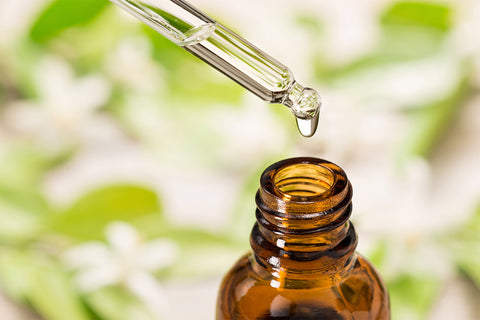
Ozonated Coconut Oil is one of the most versatile oils, and is also great for the skin. It contains large amounts of fatty acids which allow it to penetrate hair deeply without evaporating. Ozonated coconut oil is rich in carbohydrates, vitamins and minerals that are essential for good hair health.
Ideal for: All hair types, but particularly those with dry, damaged or dull hair. Ozonated coconut oil works well for those wishing to repair brittle hair and split ends, and is recommended for people with slow hair growth.
Benefits: Ozonated coconut oil has many benefits, including protecting against heat damage and repairing damaged and broken hair. Using it regularly also helps prevent hair loss and promotes healthy hair growth and a healthy scalp. Coconut oil improves the look of hair by helping it retain moisture and adding a beautiful, healthy shine.
Ozonated almond oil comes from the kernels inside almonds. Ozonated almond oil is wonderful for your hair. It contains Vitamin E, fatty acids, proteins and antioxidants, along with magnesium, which reduces hair breakage and helps it grow.
Ideal for: Dry and damaged hair, dandruff-prone hair and those with slow-growing hair or hair loss issues.
Benefits: Ozonated almond oil moisturizes, seals and protects hair and also protects against hair loss and breakage. Using it regularly helps you grow longer and stronger hair.
Ozonated olive oil is another extremely versatile oil, derived from pressing olives. It has protective and moisturizing properties. Since it coats the hair shaft and shields keratin, olive oil has protective qualities. It also has exfoliating and dandruff-fighting properties when combined with lemon juice. When used regularly, ozonated olive oil can replace the need to use conditioner and other hair-smoothing products.
Ideal for: Damaged, dull, dry or frizzy hair, as well as hair that is dandruff-prone.
Benefits: Ozonated olive oil protects against heat damage, imparts a sleek look and shine, moisturizes and gives damaged and broken hair a healthy appearance.
Ozonated grapeseed oil is an extract of cold-pressed grape seeds. It contains emollients, antioxidants and nutrients that are essential to the growth of healthy hair and skin cells. While it possesses the same moisturizing qualities as many other natural oils, grapeseed oil is superior in its ability to treat brittle and weak hair and hair loss. It is also an effective dandruff and dermatitis fighter and may help people regrow hair.
Ideal for: Dry, dull hair and brittle hair, hair that is prone to getting greasy and dandruff-prone hair. It is also effective at combating hair loss.
Benefits: Ozonated grapeseed oil moisturizes and conditions hair. It also makes hair strong and healthy and is effective in treating frizz and split ends. Grapeseed oil is helpful in fighting dandruff and reduces scalp inflammation in those who suffer from dermatitis. In addition, it blocks the production of DHT, a hormone that causes hair loss. The high content of Vitamin E in grapeseed oil encourages the production of linoleic acid, which helps restore strength and shine to weak and brittle hair.

SHOULD YOU APPLY OIL ON WET OR DRY HAIR?
You can oil when your hair is damp or dry, but your hair and scalp have to be clean, or the oil won't have a chance to be absorbed. For heavier oils like coconut oil, applying it on dry hair is best, as the larger molecules may not penetrate the shaft of wet hair as well it can dry hair.
HOW MUCH OIL SHOULD YOU BE USING?
The amount of oil you need depends on the oil you are using, the purpose (a few drops as a serum or more as a mask) and the length of your hair. Apply a few pumps or one to three palmfuls of oil onto your scalp gently and use one-two pumps on your strands depending on density and hair texture. Start at the scalp, and then gently use your hands to apply oil to your mid-lengths and ends to give them much-needed moisture, especially if you colour or chemically treat your hair.
HOW LONG SHOULD YOU LEAVE IT ON FOR?
While some leave oil in their hair overnight, but usually one-two hours should suffice. If you apply more oil than you need, thinking you need to coat every strand of your hair with oil, you will need the same amount of shampoo to get it off. This may lead to dryness, which is counterproductive. A little goes a long way.
WHAT IS THE BEST WAY TO APPLY HAIR OIL?
Section off pieces of hair and massage the oil from the root to tip, combing after with a wide-tooth comb to ensure even distribution (and to prevent tangles). Massage with your fingertips.
Repeat until everything is coated, and then twist hair into a topknot. Trichologists suggest against tying hair too tight, as massaging can loosen the hair from the roots, making them more susceptible to breakage when they're weighed down.
Standing in a warm shower can help, as the steam can improve absorption. Try soaking a towel in hot water, and then covering your head with it.
When you suds up after, removing all trace of the oil is important, so you may have to lather up twice or thrice to be sure.


